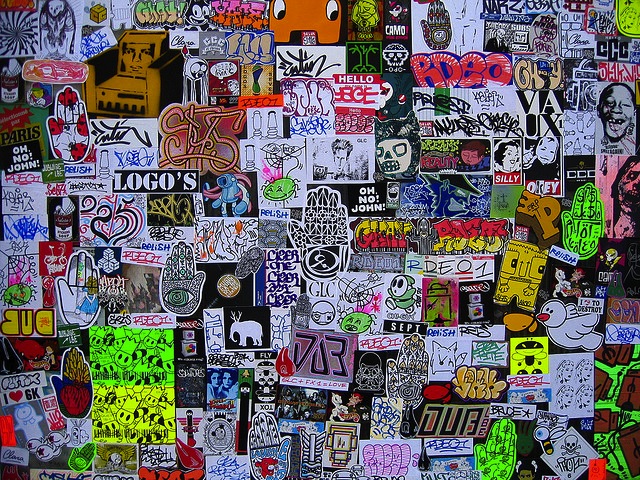
It almost goes without saying that Martha Cooper has been one of the most important documentarians of graffiti culture for the last few decades. Her urban and hip hop culture photography is iconic. More recently, Martha Cooper has expanded her graffiti documentation to the photography and collection of stickers. Her two latest books, Going Postal and Name Tagging, spotlight sticker art made with postal labels and Hello My Name Is stickers.
On Saturday from 1-3pm, Martha will join sticker fanatic and author of one of my favorite books, DB Burkeman, for a book signing at a sticker exhibition curated by DB. The show, STUCK-UP: A Selected History of Alternative & Pop Culture Told Through Stickers, is at Chicago’s Maxwell Colette Gallery and features stickers from a top-notch roster of artists.
I would gladly hop on the next plane and see this exhibit in person, but that was not an option so instead I asked Martha Cooper a few questions.
Caroline: In your book Name Tagging, you explain how you began appreciating stickers after you bought your first digital camera. What was it about the digital medium that initiated this interest in stickers?
Martha Cooper: Pre-digital, I rarely took my heavy, bulky Nikon out unless I was headed for something specific to shoot. It cost about 50 cents for film and processing every time I clicked the shutter. So although I had noticed stickers for years, I hadn’t looked at them closely and hadn’t bothered to shoot many.
My first digital camera was a little Olympus that I could easily carry around with me all the time. It had a very good close-up lens and performed well under low light. Once I had the camera, it didn’t cost any more to keep shooting so I was free to take as many photos as I wanted. Transitioning from analog to digital was a challenge. Shooting stickers was an unstressful way to practice new technology with interesting subject matter.
C: What led to you removing and collecting stickers off the street, rather than just photographing them?
MC: I’ve always been a collector. I like to look at different examples of things. At first after shooting a nice sticker, I printed it and saved it in an album. That began to feel unsatisfactory–I wanted the original. I only shoot and collect hand drawn stickers and this is pretty much the only form of graffiti and street art that can actually be removed from the street. Of course writers have criticized me for this and I know this is a dubious defense, but someday I hope to have a museum sticker exhibit.
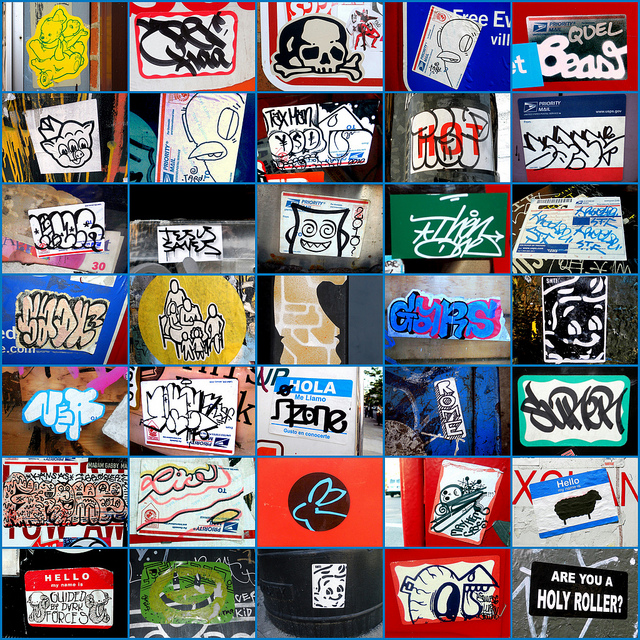
C: You have a very unique perspective as a female authority figure in this male dominated field. As a documentarian of an illegal subculture, where you are the age of many of these boys’ mothers, have you ever experienced any sort of conflict in your various roles?
MC: I’m not really an authority figure. I try to be non-judgmental. My approach is more like an anthropologist: participant observation.
C: You tend to document what is on the fringe of popularity, bringing the unknown or overlooked into the public eye. Your last two books have been about stickers. Why are you drawn to documenting subcultures? Or in the case of stickers, subcultures within subcultures?
MC: The fun is trying to figure out what is going on and how best to represent it. I like documenting things that aren’t over exposed and are a little hard to find out about. I’m interested in all kinds of art in everyday life and a still camera is a good way to record and preserve.
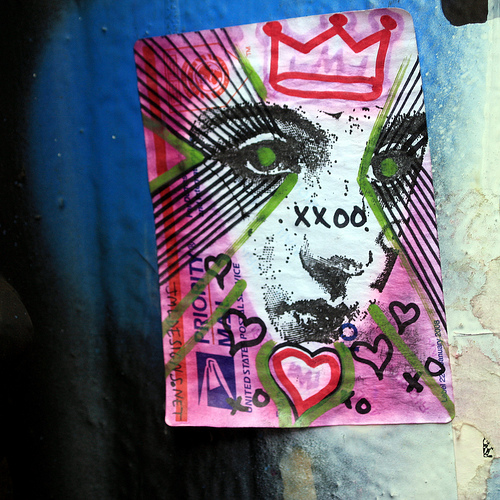
C: Most of your photography presents subjects within their greater context, but your photos of stickers are tightly cropped and don’t include their setting. Why?
MC: Whenever possible I shot stickers showing their wider context. However they are small so the details of the art would not have been visible in the layouts in the little sticker books so I had to crop out the background in many cases.
C: How do you choose what artists you profile in your books?
MC: I chose artists whose work I liked and had good photos of and with whom I had already established some kind of a connection. In Going Postal, I especially wanted to feature some artists from Philly because they have such a strong hand drawn sticker culture. In Name Tagging, I wanted to have a range of artists of different ages.
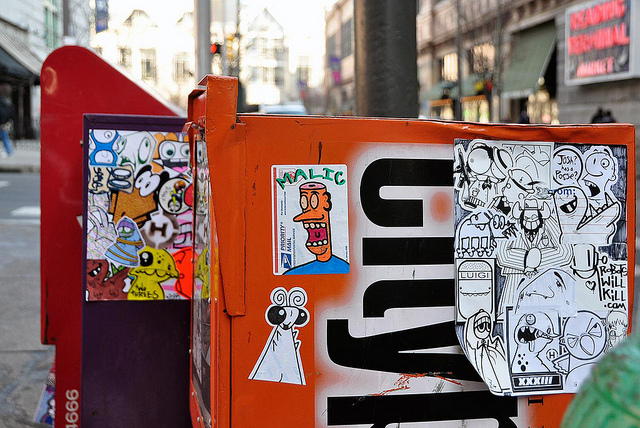
C: On surfaces covered in stickers, what will make a certain sticker stand out to you?
MC: Hand drawn stickers are hard to find so those are the ones that stand out the most. After that, bold graphics or unique handstyles catch my eye. I’m a fan of both graffiti and street art.
C: In the 80s and 90s there was very little documentation of graffiti and hip hop culture. The select images from these eras have become iconic. Do you think the ubiquity of digital photography has led to an overload of documentation?
MC: In terms of publishing and making a profit, there’s probably an overload. But in terms of seeing and sharing public art on the street, there can never be too much.
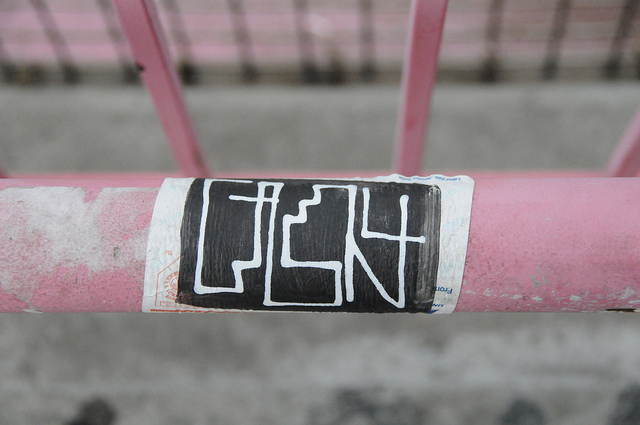
C: Hundreds of photos of stickers, graffiti, and street art are uploaded to flickr daily. Why should people buy graffiti art books in an age where similar information is online, free, and en masse?
MC: I ask myself that question all the time. I’m a book lover but I’m a dinosaur. I would like to think that the edited and organized selection of art, the quality of the photos and the informative texts in books would make them valuable–but maybe not.
C: How do you think shows like DB’s can change the public’s perception of graffiti stickers?
MC: DB has put together an amazing collection of not just graffiti, but all kinds of artist stickers. Most people walk by stickers on the street without seeing them. db’s shows should open their eyes to what they’re missing.
C: Goals or plans for 2012?
MC: Since 2006 I’ve been documenting a neighborhood in Southwest Baltimore called SoWeBo. I’m hoping to put those photos together for a book–before books become obsolete.
Photos by Lois Stavsky, Paris sous les sticks, Damonabnormal and RJ Rushmore
